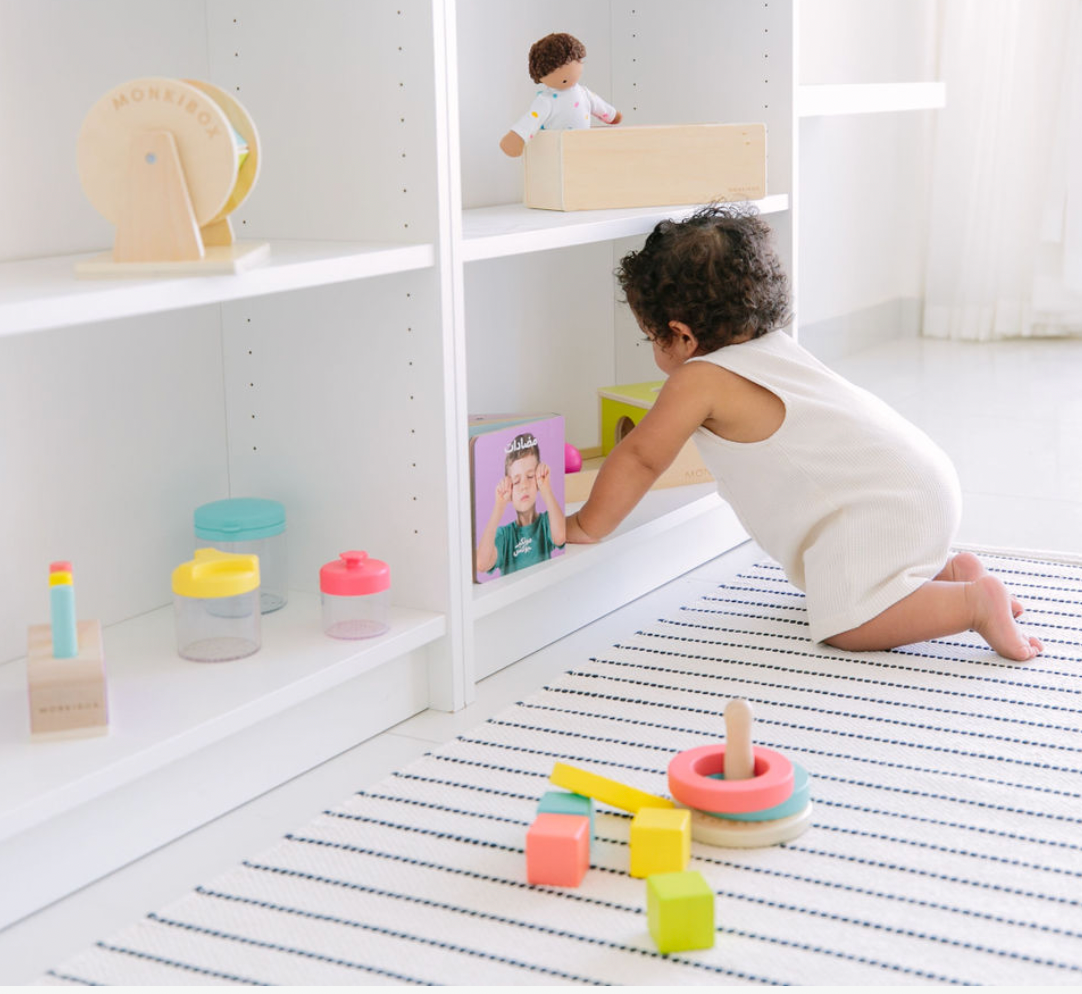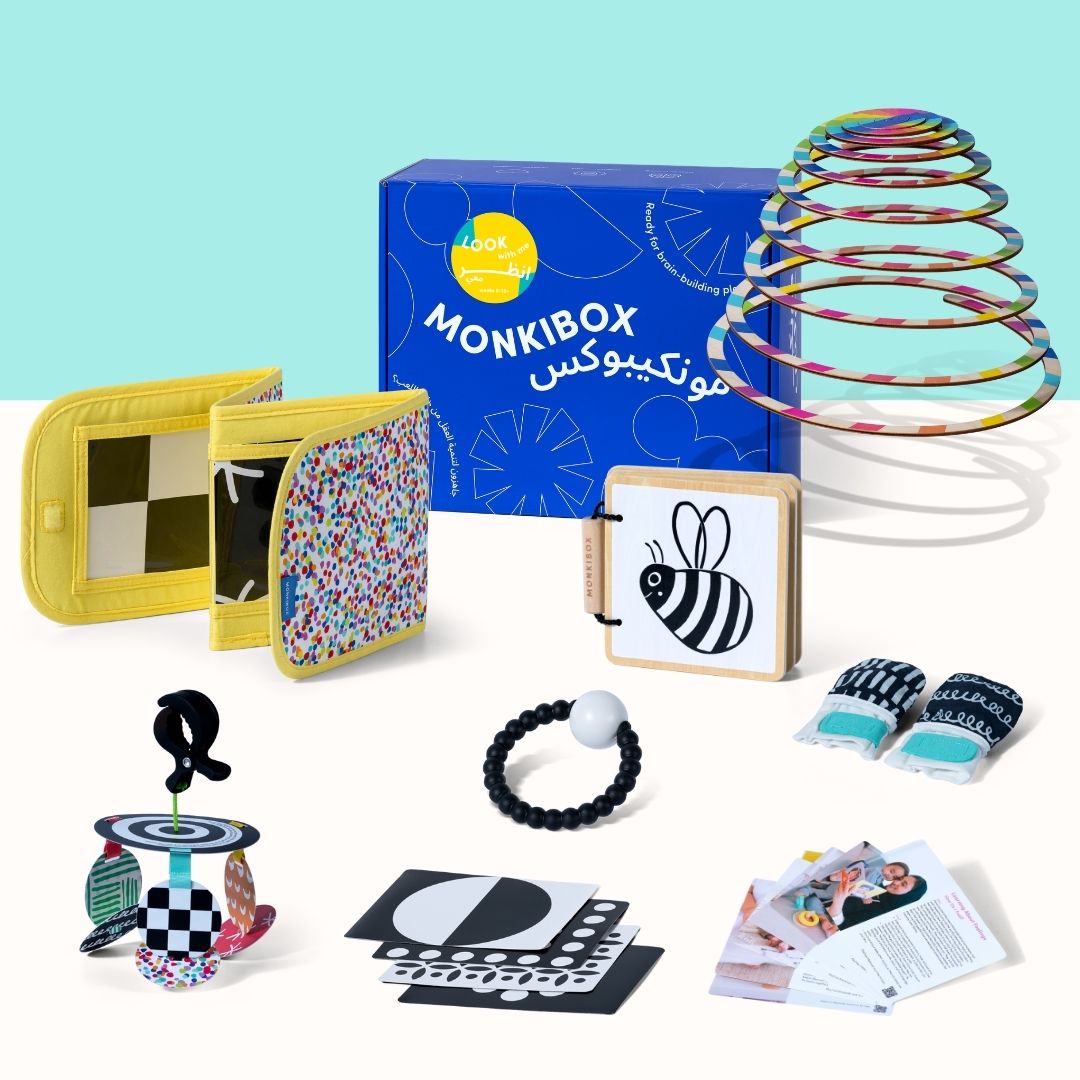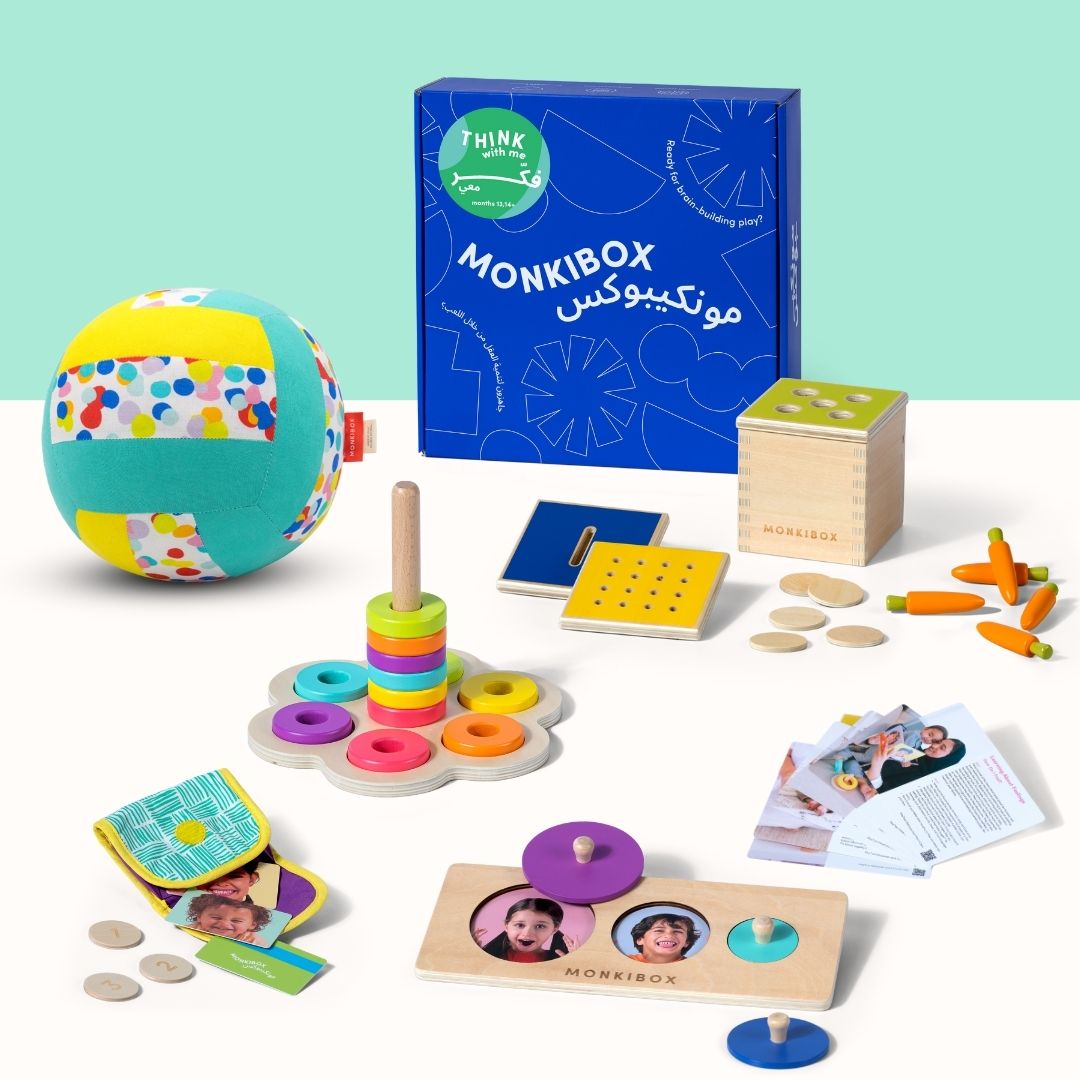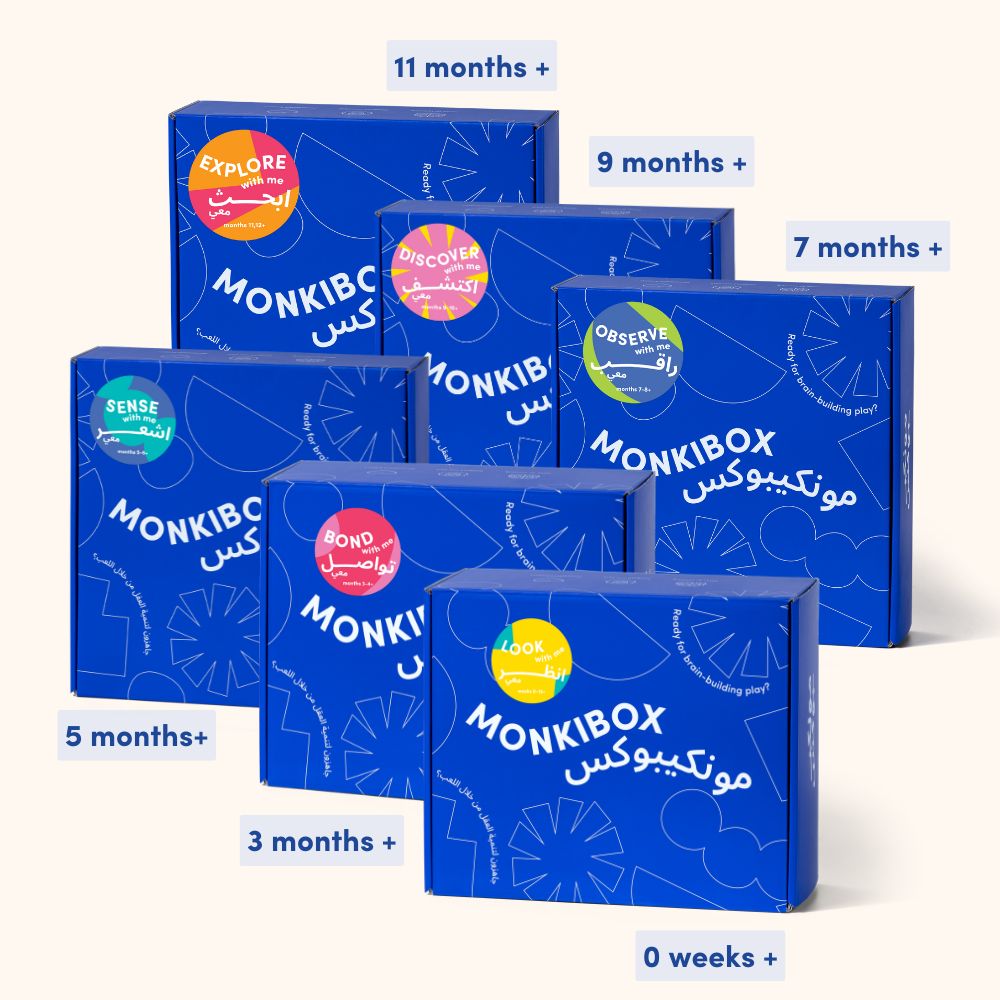Any child loves a new toy, and every parent loves a tidy play area that's easy to clean. That is why we are toy rotation cheerleaders!
But it can be a little daunting to start if you're not sure what the first steps are, so here are a few of our most frequently asked questions about toy rotation:
What is toy rotation?
Toy rotation is switching what toys you put out for your child. A rotation can look like changing how you display toys, deciding to combine different playthings and simply, setting out previously played with toys.
Why should you do it?
Of course, many families choose not to do it, but toy rotation helps you minimise clutter, focus on toys your baby loves and reduce the need to buy new toys frequently.
How often do you rotate toys?
It's really important to observe your baby and take note of what keeps them engaged. It's okay to keep his favourites on the shelf a little longer while switching out other toys every other week. But every 2 - 4 weeks should be sufficient to keep your baby excited about his play options.
What sort of toys should be on a shelf?
The type of toys on your shelf depends on your baby's age, mobility, development and interest. Some toys that will always be good to have around include puzzles, blocks, balls, a car/truck, a baby doll or small figurines, and scarves or silks.
If this proves to be too many options, keep some in different areas of the house or move them around the room to encourage your baby to crawl or walk around.
Where do you store toys that are out of rotation?
It's a good idea to invest in some clear plastic containers and dedicate a cupboard or shelf (like Ikea's Kallax shelves) to toys that you take out of rotation. Before starting toy rotation, we recommend you do some culling by donating or gifting them to other families.
How many toys should be on the shelf?
There's no golden rule here, but somewhere between 5 and 7 options are usually enough for younger kids. When you select toys for rotation or if you're planning on buying new toys, think of how you can combine them.
Can you use a shape sorter AND an object permanence box? This way, you can have two toys on the shelf but multiple ways to play, which will keep your baby engaged for longer.
Wouldn't more toys keep my baby busy for longer?
It probably will, but only at first. By age one, babies can focus on a single task for about a minute, so it feels logical to give them many options so they can jump from one toy to the next. This is a short-term approach because you want to teach your baby to be fully engaged and focused while playing.
If you invest in good quality and open-ended toys, your baby will find many ways to play with a single toy. You can also start with more frequent rotations to keep your baby excited and interested.
Can you rotate books too?
Yes, it's a great way to expand your baby's vocabulary by introducing new books or books that fit with the toys and activities on the shelf. If your baby is interested in cars, combining books about cars with toy cars can be loads of fun.
Start the development journey with MonkiBox. Montessori-inspired toys designed to give your child the best start.





